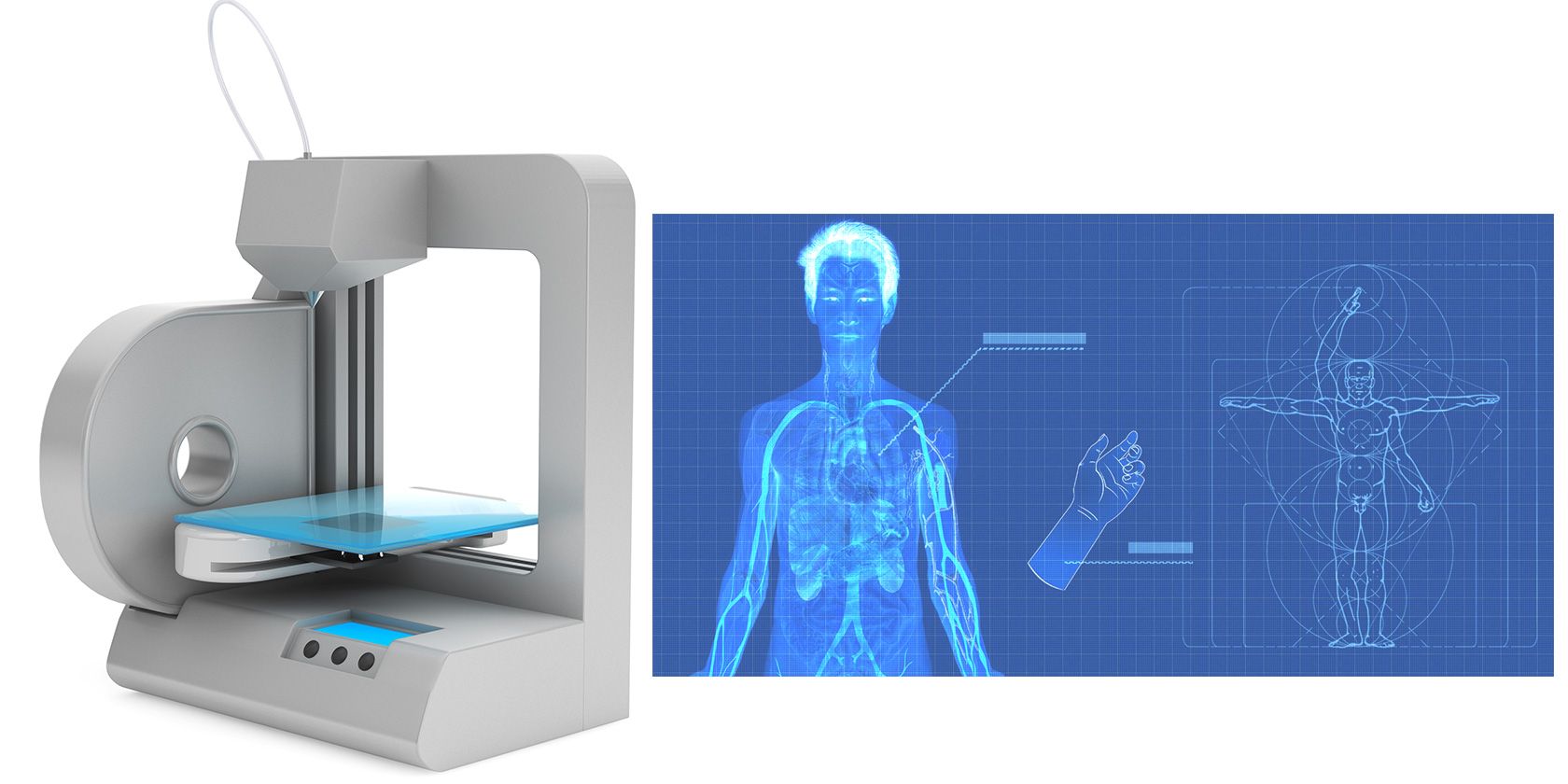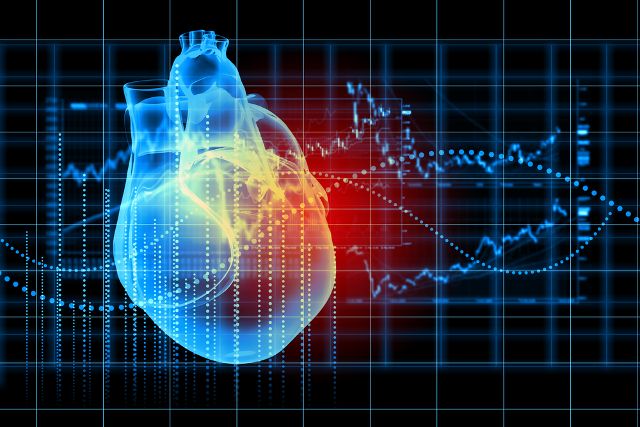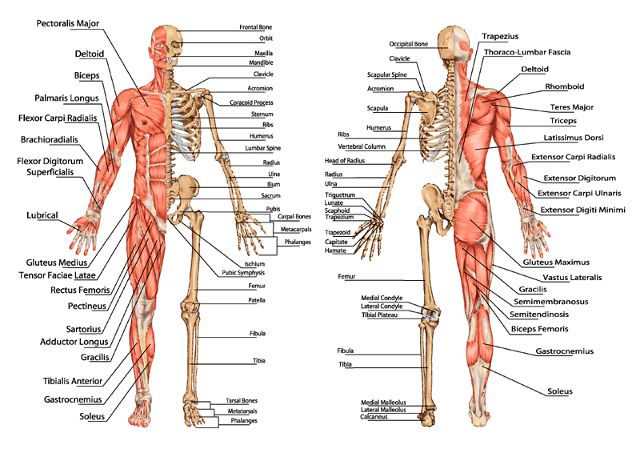3D printing is all the rage right now; people are printing machine parts, statues of cosplayers, model homes, and even prosthetic hands that look like Iron Man's. But perhaps the most interesting thing that's currently being printed is human tissue.
How does it work? What can be printed? And will be ever be able to print a full human being? Let's see what the technology and science have to say.
Bioprinting
The process of printing tissue is called bioprinting, and the techniques behind it are quite impressive.
First, cells are taken from a donor and inserted into a culture that allows them to multiply. Once enough cells have been grown, they're loaded into a printer cartridge. Then, they're laid down like any other material used in a 3D printer. The structure is built layer by layer, with alternating layers of cells and a structuring material, which can be a water-based gel or a sugar-based substance (sometimes artificial scaffolding is also used to help create the proper shape of the piece being printed).
After the tissue has been printed, the layers of cells begin to grow together, closing up the gaps between them and filling out the intended tissue structure. Once the cells have fused together and matured, the tissue is ready for experimentation in the lab or being transplanted into a human, usually the person who donated the cells in the first place.
One of the big advantages of bioprinting tissues over the standard transplanting process is that the tissue is created with cells from the patient's body, significantly reducing the chances of rejection, a condition that results from the body not recognizing the implanted tissue. This can cause major problems, and the medical community is quite excited about the potential of 3D printing in reducing the incidence of rejection.
So what's been bioprinted? Blood vessels, bones (including a skull), trachea, bladders, heart valves, skin, and even an ear have been successfully created with this method. A team in China created small kidneys that worked for four months. But scientists have set their sights much higher. Some researchers have started printing liver tissue, although printing an entire liver is still estimated to take up to ten days.
And one group is even working on 3D printing a human heart.
The Edge of Today's Bioprinting Tech
The team, based at the University of Louisville and led by cell biologist Dr. Stuart Williams, says that the "bioficial" heart would be a combination of natural and artificial materials, and would likely be used for transplantation in people suffering from heart failure who aren't candidates for traditional artificial hearts, like children.
He predicts that his team will be able to assemble an entire heart in three to five years, and that human trials could begin within the decade.
If you think about building an airplane, what you do is build individual parts and then assemble. We’re doing the exact same thing with the bioficial heart.
—Dr. Stuart Williams
The team is aiming for a seven-day window from the time the medical team harvests 50 CCs of fat from a patient (about the size of two golf balls) to the time that the heart is printed. Just seven days to create an entirely new heart. In theory, this heart will then be used to replace any artificial means that are currently being used to keep the patient's heart going.
The Future
So if we can print bones, blood vessels, organs, and skin, doesn't it make sense that the next thing to think about is printing a full human being? It sounds like science fiction, but, as we've seen, science fiction and reality tend not to differ as much as we expect sometimes. Suspend your disbelief for a few minutes and let's undertake a thought experiment.
3D printing a human being, if at all possible, is still far off. Printing a liver and a heart is one thing, but printing an entire body is completely another. While 50 CCs of fat is enough to print most of the blood vessels of the heart, there's a huge amount of material in the human body, which means we'd not only need to find a way to grow enough material, but we'd also have a tough time mapping it all out correctly.
Take a quick look through any anatomy textbook and you'll see that there are thousands of tiny pieces that fit together perfectly in the properly functioning human body.
With how far computer modeling has come, though, it's not hard to imagine that we will eventually be able to map out the entire human body. We've mapped the entire human genome, we've found ways of using lasers to scan 3D images of people, and we're developing new medical tech all the time. We've even fully simulated parts of the brain. And that brings us to the bigger issue.
Compared to the brain, the rest of the body is child's play. There are 100 billion neurons, and 100 trillion synapses, in an average human brain. Being able to print that many neurons, much less connect them all in the right way, is going to be extremely difficult. We arguably don't even understand what consciousness is.
Doctors have printed a replica of a brain to help them prepare for surgery, and have printed a large model of a neuron, but actually getting down to this level of detail is far beyond anything we've ever done.
Of course, you could potentially just replace the brain with a computer, but you'd still have to print the nervous system, which would also be challenging, especially when it comes to something like optic nerves, which need to work perfectly to be of any use.
Can It Be Done?
3D printing a human being, if it's ever going to happen, will likely happen far in the future—much farther than any readers of this article are likely to see.
It'll require a huge amount of biotechnological advancement, and some radical shifts in how we think about both technology and the human body. Can it be done? I hesitate to say "no," because there are examples all around us of things that someone once said couldn't be done. 3D printing itself was science fiction until recently. If there's one thing that we know about humanity, it's that we constantly surprise ourselves.
What do you think? Will we ever see a 3D-printed human body? What uses could this possibly serve? Should we even be printing human organs (not everyone thinks so)? Share your thoughts below!
Image credits: 3d printer Via Shutterstock, Virtual image of human heart with cardiogram, human skeleton from the posterior and anterior view - didactic board of anatomy of human bony and muscular system via Shutterstock.



